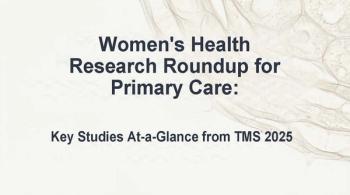Originally, the SHS included 3 components, with the first assessing CVD mortality rates from 1984 to 1994 among tribal members aged 35-74 years, the second being a clinical examination of 4500 tribal members, and the third was the morbidity and mortality surveillance of those 4500 participants. Because genetics are important in the occurrence of CVD, the SHS expanded into the genetic epidemiology area and conducted a pilot family study that consisted of approximately 30 families. Due to the “success” of that pilot study, the SHFS was funded to examine the genetic contributions to CVD and its risk factors.3
New Data Show High Prevalence of Dyslipidemia in American Indian Youth
Few participants with dyslipidemia received lipid-lowering medications despite high prevalence, reported authors of the Strong Family Heart Study.
In a study of a young American Indian population, more than 70% of young adults and more than 50% of adolescents had dyslipidemia, and some had subclinical or clinical
While a significant portion of participants had dyslipidemia, however, only a few received lipid-lowering medications during the study period, reported researchers in the Journal of the American Heart Association.1
The findings come from a 19-year-review of the Strong Heart Family Study (SHFS), part of the SHS – the largest epidemiologic study of CVD in American Indian adults.1
“We were surprised about the numbers, especially in adolescents,” said first author Jessica A Reese, PhD, epidemiologist, Center for American Indian Health Research, University of Oklahoma Health Sciences Center, Oklahoma City, in a National Institutes of Health (NIH) press release. “These findings show the importance of early screenings and interventions, especially for teens and young adults who may be more likely to have underlying cardiovascular risks, diabetes, or chronic liver disease.”2
The SHS, supported by the NIH, launched in the early 1980s after a review of existing data by the Subcommittee on Cardiovascular and Cerebrovascular Disease of the Secretary of Health and Human Service’s Task Force on Black and Minority Health suggested information on CVD in the American Indian population was inadequate and, therefore, strongly recommended epidemiologic studies.3
The SHFS included 12 communities in central Arizona, southwestern Oklahoma, and the Dakotas, according to Reese and colleagues. They evaluated 1440 SHFS participants aged 15 to 39 years at the baseline examination in 2001 to 2003.1
Researchers measured lipids after a 12-hour fast and used carotid ultrasounds to detect plaque at baseline and follow-up in 2006 to 2009 (median follow-up, 5.5 years). Also, they identified incident CVD through 2020 with a median follow-up of 18.5 years, according to the study.1
“We used shared frailty proportional hazards models to assess the association between dyslipidemia and subclinical or clinical CVD, while controlling for covariates,” wrote investigators.1
FINDINGS
At baseline, the prevalence of dyslipidemia was 55.2% in participants aged 15 to 19 years, 73.6% in those aged 20 to 29 years, and 78% in those aged 30 to 39 years, according to the results. Despite these high percentages, only a few participants with dyslipidemia reported receiving lipid-lowering medications: 0 of the 15- to 19-year-olds, 1 of the 20- to 29-year-olds, and 10 of the 30- to 39-year-olds.1
Among the cohort, approximately 2.8% had
During the respective follow-up periods, researchers noted 9.9% of participants had incident carotid artery plaque, 11.0% had plaque progression, and 9% had incident CVD.1
After investigators adjusted for covariates, they observed that the risk of incident plaque was independently associated with elevated levels of total cholesterol (≥200 mg/dL; HR 1.98, 95% CI 1.31-2.99), LDL-C (≥160 mg/dL; HR 2.97, 95% CI 1.43-6.18), or non–high-density lipoprotein cholesterol (non-HDL-C; ≥130 mg/dL; HR 1.67, 95% CI 1.11-2.52). In addition, plaque progression was independently associated with elevated levels of total cholesterol (HR 1.69, 95% CI 1.16-2.47), LDL-C (HR 2.76, 95% CI 1.43-5.33), or non–HDL-C (HR 1.47, 95% CI 1.01-2.14).1
“This indicates that abnormal cholesterol levels are not only associated with the development of plaque but also the worsening of plaque,” wrote researchers.1
In multivariable analysis, the risk of clinical CVD was higher in participants with vs without LDL-C levels ≥160 mg/dL, while controlling for covariates (HR 2.44, 95% CI 1.23-4.84).1
“The effectiveness of intervention strategies that include promoting awareness of dyslipidemia, lifestyle modification, and guideline-directed medical therapy should be studied to provide evidence-based information for managing dyslipidemia among at-risk adolescents and young adults,” wrote Reese et al.1
References:
- Reese JA, Roman MJ, Deen JF, et al. Dyslipidemia in American Indian adolescents and young adults: Strong Heart Family Study. J Am Heart Assoc. Published online March 6, 2024. doi:10.1161/JAHA.123.031741
- More than half of American Indian youth may have abnormal or high cholesterol. News release. National Institutes of Health. March 6, 2024. Accessed March 8, 2024.
https://www.nih.gov/news-events/news-releases/more-half-american-indian-youth-may-have-abnormal-or-high-cholesterol - About Strong Heart Study. Strong Heart Study Web site.
https://strongheartstudy.org/About . Accessed March 8, 2024.
Newsletter
Enhance your clinical practice with the Patient Care newsletter, offering the latest evidence-based guidelines, diagnostic insights, and treatment strategies for primary care physicians.

























































































































































































































































































